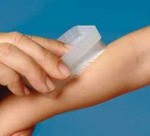 Recently, more and more early childhood programs have opened their doors to children with a variety of needs. These integrated and inclusive communities are wonderful places for all children to learn and are fantastic in a multitude of other ways. The law says that children with special needs must be educated in the Least Restrictive Environment (LRE). Very often, that environment is a general education classroom, or a program or class for typically developing children. Typically developing children serve as wonderful models for children with special needs. Children with special needs teach typically developing children about diversity and bring a wealth of skills and education that they also model in the classroom. I could write more about why and how the best inclusive classrooms work, but that’s not why I am writing this post.
Recently, more and more early childhood programs have opened their doors to children with a variety of needs. These integrated and inclusive communities are wonderful places for all children to learn and are fantastic in a multitude of other ways. The law says that children with special needs must be educated in the Least Restrictive Environment (LRE). Very often, that environment is a general education classroom, or a program or class for typically developing children. Typically developing children serve as wonderful models for children with special needs. Children with special needs teach typically developing children about diversity and bring a wealth of skills and education that they also model in the classroom. I could write more about why and how the best inclusive classrooms work, but that’s not why I am writing this post.
The truth of the matter is that more often than not, children in early childhood programs don’t recognize their peers as being different. In fact, while we frequently discuss the things that make us each unique, we generally don’t bring up “special needs” unless a student asks. That is one of the joys of young children. To them, the child with special needs is simply another friend. The title of this post “Why does he have that?” is something I do hear occasionally from children. I’ll hear the statement while brushing a child, if they are sitting in a chair at meeting time to help contain their body, or if they are mouthing a chewy tube for oral input. The best part is that the typically developing child is not asking because they see that child as different, instead they are asking because they want one too! That’s an important message. Certainly chewy tubes can not be shared, but I will brush a typically developing child if they are curious about it.
 When children ask about an item that a child with special needs is using, I consistently respond (in a neutral, matter-of-fact tone) with “Everyone gets what they need and everyone needs something different.” If a typically developing child wants a chair because a child with special needs is using one, I will repeat that statement and add “is that what your body needs right now?” If they say “yes,” they may have a chair. In this way, all children are learning to tune in to and manage their bodies and are developing the ability to evaluate and ask for what they need. This phrase can be used during school, at afterschool classes, the park, and other times when your child with special needs is using an assistive device (for example: a PECS communication book, wheelchair, deep pressure vest, hand fidget). It can also be helpful when your typically developing young child asks about one of these items.
When children ask about an item that a child with special needs is using, I consistently respond (in a neutral, matter-of-fact tone) with “Everyone gets what they need and everyone needs something different.” If a typically developing child wants a chair because a child with special needs is using one, I will repeat that statement and add “is that what your body needs right now?” If they say “yes,” they may have a chair. In this way, all children are learning to tune in to and manage their bodies and are developing the ability to evaluate and ask for what they need. This phrase can be used during school, at afterschool classes, the park, and other times when your child with special needs is using an assistive device (for example: a PECS communication book, wheelchair, deep pressure vest, hand fidget). It can also be helpful when your typically developing young child asks about one of these items.
The anxiety associated with talking about special needs is usually reserved for adults. Children consider the things they are “used to,” to be the norm. They read your cues. If “everyone gets what they need and everyone needs something different” is presented as a fact, children will believe it. Let’s take a page from the young child’s handbook and simply accept the people around us for who they are. Set the example. If we can, the world will be a better place for us all.
(Note: As children get older or are interacting with individuals who have more severe challenges, they may have additional questions. Keep an eye out for a post with resources to support this discussion. Conversation is also incredibly important for the siblings of children with special needs so that they have an understanding of their brother and sister. This will also be a topic in a separate post.)
